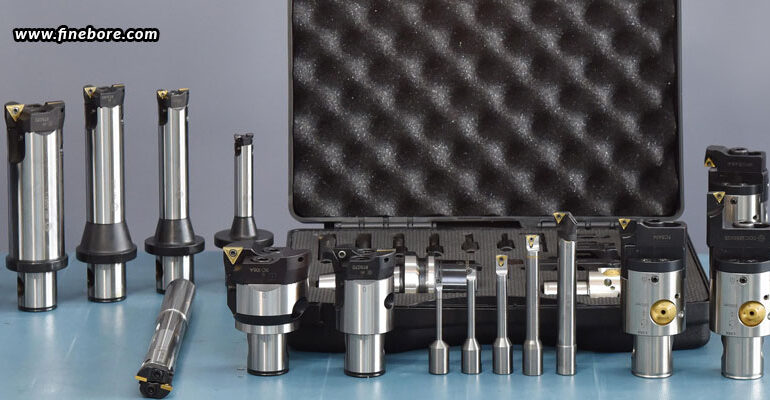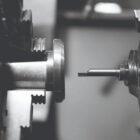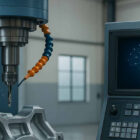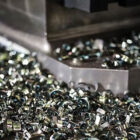The accuracy of each cut is crucial in the complex field of machining since it determines how a raw material becomes a final product. Choosing the appropriate precision boring tool is a pivotal decision that lays at the core of this accuracy. Whether you’re making metal, plastic, or composite components, this decision might be the difference between expensive mistakes and faultless accuracy. Factors like material qualities and tolerance standards loom big and need careful attention as machinists navigate through a maze of possibilities. Every step this decision-making process takes influences the result, influencing not just the end product’s precision but also the efficiency of the entire machining operation. Join us as we navigate the complexities of choosing the ideal precision boring tool, where each decision has the potential to yield either excellence or compromise. We’ll go over the important factors to take into account when selecting the precision boring tool for your particular application. We’ll cover all you need to know to make wise decisions and get outstanding machining outcomes, from material type to tolerance requirements.
The material to be cut
The choice of the tool to use for the given material is a fundamental aspect of precision machining. A customized approach to tool selection is necessary as every material has a different set of challenges and concerns.
- Aluminium: Because of its reduced hardness and thermal conductivity, aluminium needs tools that can tolerate abrasion and effectively disperse heat. In this sense, carbide tools – which are well-known for their hardness and wear resistance – succeed, guaranteeing extended tool life and reliable performance.
- Hardened steel: Significant cutting forces and temperatures must be tolerated by the tools used for machining hardened steel. Because of its higher hardness, carbide is still a common material of choice. However, because of the intense wear and heat produced during machining, certain coatings or tool geometries may be required.
- Composites and polymers: For more pliable materials, such as composites or polymers, an alternative method is necessary. Although carbide tools continue to be incredibly durable, high-speed steel might be a more cost-effective option, offering sufficient performance without the additional cost of carbide.
To choose the best tooling solution, machinists must always carefully consider variables including toughness, hardness, and thermal conductivity. Optimizing the mix of geometry, coating, and tool material can reduce tool wear, increase efficiency, and produce better machining outcomes. Machinists can confidently navigate the confusing array of options and choose the ideal precision boring tool for each distinct application by comprehending the subtleties of material properties and how they affect tooling requirements. This will ensure accuracy, effectiveness, and success in their machining endeavours.
Hole diameter and depth
The size of the hole that needs to be bored also has a huge impact on the tool that needs to be used. The depth and diameter of the hole are not simply numerical measurements; they are also important factors that dictate the tool’s design, functionality, and quality of the machined hole.
- Hole diameter: Larger diameter holes convey unique challenges that need tools with increased stiffness in order to maintain dimensional precision and prevent deflection. Size counts in this situation since larger tools provide more stability and resistance to bending pressures, which ensures reliable results even when cutting enormous loads.
- Hole depth: The stakes get higher as the hole needs to go deeper. Longer reach becomes essential, requiring tools that can smoothly and precisely delve into the corners of the workpiece. However, effective chip evacuation and heat control are equally important considerations in addition to depth. Effective heat dissipation and rapid chip removal are essential for preventing thermal deformation and maintaining machining integrity in tools.
In order to traverse this complex terrain, machinists need to undertake an assessment journey. They need to carefully measure the hole diameter and depth requirements, closely examining the details of their machining process. Equipped with this understanding, they may choose a tool that complements these specifications, guaranteeing smooth operation and compatibility. Success in the field of precision machining depends on having an acute awareness of the relationship between form and function as well as meticulous attention to detail. Through careful consideration of the diameter and depth, machinists may steer clear of the pack and achieve levels of accuracy and productivity while boring holes.
Tolerance requirements
Achieving the required tolerance level in the completed bore is crucial in the complex realm of precision machining. As the standards of excellence, tolerances specify the amount that can be deviated from the ideal measurements. The demands placed on precision boring tools increase as these tolerances tighten, which makes careful tool selection imperative.
- Factors to be considered: Tools that have to fulfill strict tolerance standards have to be incredibly accurate and precise. Machinists monitor every facet of tool performance, including concentricity and runout, in an effort to preserve dimensional integrity. Precision is an essential quality as even the smallest variation can be the difference between success and failure.
- Tools for high precision: The choice of tools with precision-ground components and high-quality construction is essential as these tools represent the highest level of engineering brilliance and workmanship, serving as the vanguards of precision. They are prepared to fulfil the demanding requirements of precision machining and offer outcomes that exceed expectations because of their constant dedication to perfection.
- Accuracy and repeatability: Reaching the required degree of precision is just one component of the challenge. In addition, repeatability is very important since it guarantees consistency and dependability during the machining process. Tools equipped with precisely ground parts are very accurate in reproducing results, which gives the machinist confidence and ensures the integrity of each hole that is created.
There can be no compromise in the quest for excellence. Machinists may achieve unmatched levels of quality and performance and realize the full potential of their machining endeavours by choosing tools that are based on the concepts of accuracy and dependability, setting them on a path to excellence.
Tool geometry and coatings
To achieve ideal machining results, the geometry of precision boring tools and the coatings they have are essential. These components are essential for managing surface finish, chip formation, and cutting forces, which in turn determines how effective and efficient the tool is in a variety of machining applications.
- Tool geometry: Different tool geometries are required for different materials and machining circumstances. A positive rake angle, for example, can help materials with high ductility as it facilitates chip evacuation and lowers cutting forces. On the other hand, a neutral or negative rake angle may be necessary for hard or brittle materials in order to reduce cutting forces and avoid tool wear.
- Tool coatings: The selection of tool coating also has a substantial influence on the level of performance under challenging machining conditions. Advanced coatings like titanium carbonitride or titanium nitride provide better wear resistance, decreased friction, and longer tool life. By establishing a barrier of defence between the tool and the workpiece, these coatings reduce tool wear and increase tool lifespan. Additionally, they improve surface polish and chip evacuation, which raises the general level of machining quality and efficiency.
Machinists can maximize efficiency and performance in their precision boring operations by carefully evaluating tool geometry and coating alternatives. The correct choices can yield outstanding results when working with hard or soft materials, intricate geometries, or difficult machining circumstances.
Machine compatibility and tool-holding
Achieving the best possible outcomes in the field of precision boring depends on a number of important aspects. Every element is critical to the effectiveness of machining processes, from compatibility evaluations to reducing vibration and increasing stability.
- Compatibility assessment: The first step to effective machining operations is to make sure the precision boring tool and machining equipment are compatible. Carefully evaluating the machining equipment’s capability, tool holder interface, and spindle type guarantees a smooth integration with the selected tool, making it necessary to take into account any unique needs or limits that may apply to each machine.
- Secure clamping and positioning: To ensure secure clamping and accurate placement of the precision boring tool, it is essential to choose the appropriate tool holders and adapters. Selecting holders and adapters with strong gripping mechanisms that provide precise placement maximizes stability and reduces vibration during machining, which eventually results in more dependable and consistent performance.
- Reducing vibration: The precision and quality of precision boring operations can be greatly affected by vibration. Considering variables like tool overhang, stiffness, and dynamic balancing can help reduce vibration. Reducing the amount of tool overhang lessens the chance of vibration and deflection, but it is important to make sure the setup is rigid to offer steady cutting conditions. Additionally, the tool’s dynamic balance must also be considered in order to encourage smoother operation and prevent chatter.
- Maximizing stability: For precision boring to be as stable as possible, a rigid tool configuration is necessary. Making sure the setup is rigid during the machining operation and that the tool is firmly secured in the holder enhances surface finish quality, dimensional accuracy, and machining stability.
Precision boring operations may be performed by machinists with higher standards if compatibility, tight clamping, vibration reduction, and stability are carefully addressed. These factors improve performance, while also helping achieve better outcomes and maintaining dimensional accuracy during the machining process.
To conclude, selecting the right precision boring tool is crucial in order to accomplish accurate and effective machining results. Machinists may choose the best tooling solutions for a given application by carefully weighing variables like material type, hole diameters, tolerance requirements, tool geometry, coatings, and machine compatibility. To ensure the success of machining operations, it is essential to consult with specialists and carry out comprehensive assessments. FineTech Toolings is a trustworthy choice for the best precision boring tools in Bangalore. Machine operators can achieve improved efficiency, surface finish, and dimensional precision in their production operations by using the exceptional products and knowledge of FineTech Toolings. Manufacturers can accomplish their machining objectives with assurance and accuracy by putting their trust in such appropriate precision boring tools.






